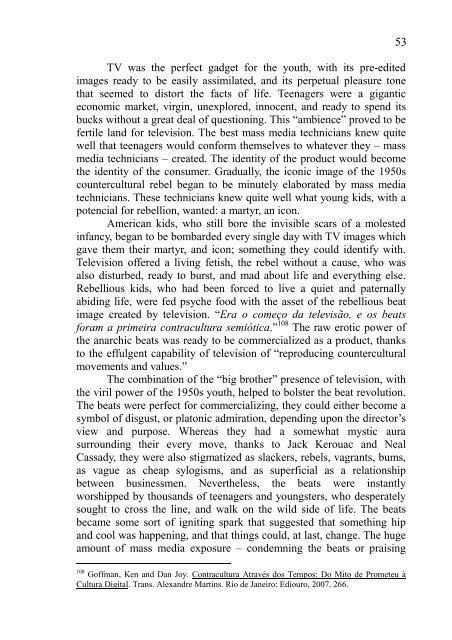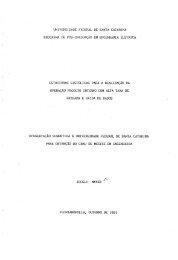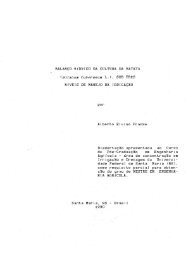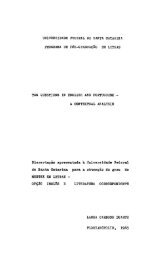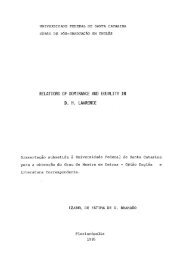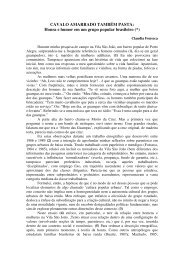Tropical ginsberg
Tropical ginsberg
Tropical ginsberg
Create successful ePaper yourself
Turn your PDF publications into a flip-book with our unique Google optimized e-Paper software.
TV was the perfect gadget for the youth, with its pre-edited<br />
images ready to be easily assimilated, and its perpetual pleasure tone<br />
that seemed to distort the facts of life. Teenagers were a gigantic<br />
economic market, virgin, unexplored, innocent, and ready to spend its<br />
bucks without a great deal of questioning. This “ambience” proved to be<br />
fertile land for television. The best mass media technicians knew quite<br />
well that teenagers would conform themselves to whatever they – mass<br />
media technicians – created. The identity of the product would become<br />
the identity of the consumer. Gradually, the iconic image of the 1950s<br />
countercultural rebel began to be minutely elaborated by mass media<br />
technicians. These technicians knew quite well what young kids, with a<br />
potencial for rebellion, wanted: a martyr, an icon.<br />
American kids, who still bore the invisible scars of a molested<br />
infancy, began to be bombarded every single day with TV images which<br />
gave them their martyr, and icon; something they could identify with.<br />
Television offered a living fetish, the rebel without a cause, who was<br />
also disturbed, ready to burst, and mad about life and everything else.<br />
Rebellious kids, who had been forced to live a quiet and paternally<br />
abiding life, were fed psyche food with the asset of the rebellious beat<br />
image created by television. “Era o começo da televisão, e os beats<br />
foram a primeira contracultura semiótica.” 108 The raw erotic power of<br />
the anarchic beats was ready to be commercialized as a product, thanks<br />
to the effulgent capability of television of “reproducing countercultural<br />
movements and values.”<br />
The combination of the “big brother” presence of television, with<br />
the viril power of the 1950s youth, helped to bolster the beat revolution.<br />
The beats were perfect for commercializing, they could either become a<br />
symbol of disgust, or platonic admiration, depending upon the director’s<br />
view and purpose. Whereas they had a somewhat mystic aura<br />
surrounding their every move, thanks to Jack Kerouac and Neal<br />
Cassady, they were also stigmatized as slackers, rebels, vagrants, bums,<br />
as vague as cheap sylogisms, and as superficial as a relationship<br />
between businessmen. Nevertheless, the beats were instantly<br />
worshipped by thousands of teenagers and youngsters, who desperately<br />
sought to cross the line, and walk on the wild side of life. The beats<br />
became some sort of igniting spark that suggested that something hip<br />
and cool was happening, and that things could, at last, change. The huge<br />
amount of mass media exposure – condemning the beats or praising<br />
108 Goffman, Ken and Dan Joy. Contracultura Através dos Tempos: Do Mito de Prometeu à<br />
Cultura Digital. Trans. Alexandre Martins. Rio de Janeiro: Ediouro, 2007. 266.<br />
53


